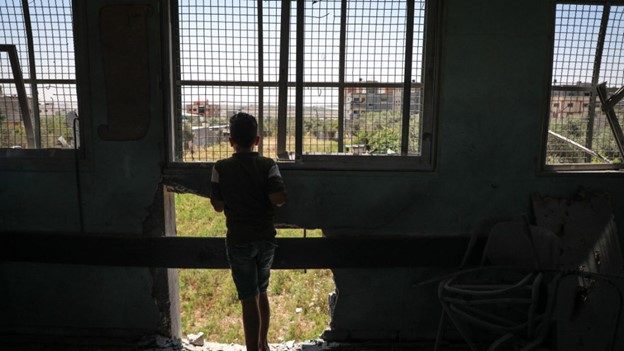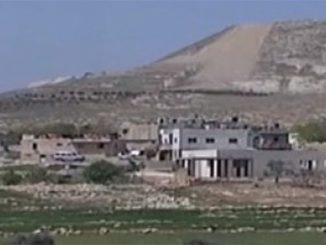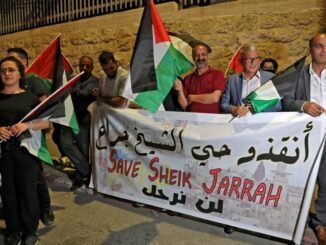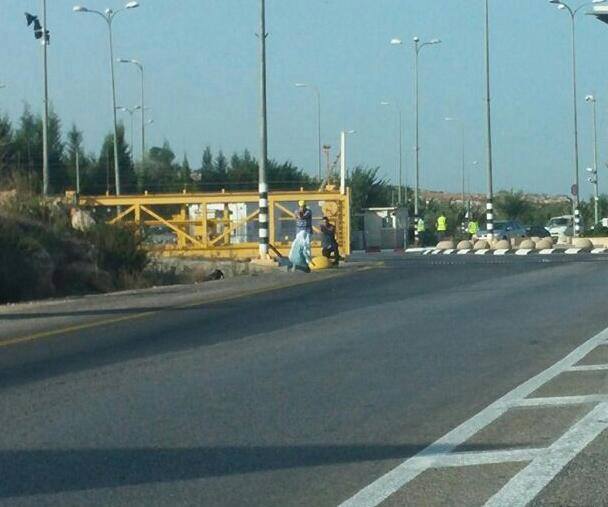
The New York Times has published an extensive account of the youngest victims of Israel’s most recent 11-day offensive, in which the Israeli forces frequently targeted residential areas of Gaza, known as the world’s largest open-air prison.
Unprecedentedly, one day after the NYT coverage of the story, the Israeli newspaper Haaretz published a cover story, featuring the photos and stories of the 67 Palestinian children killed in the latest Israeli bombardment on Gaza.
The names and photographs of children killed in Israel’s recent strikes on Gaza were published on the front page of Friday’s edition of the New York Times, in a move that has drawn praise from Palestine activists, as well as criticism of the paper’s Middle East coverage.
The US daily newspaper also published an extended online obituary of the children recently killed in Gaza and Israel.
At least 67 children under the age of 18 were killed in Gaza in what has been broadly seen as the worst escalation of violence by Israel since 2014.
Dozens of children, many of whom were under the age of 16, including several babies, were killed in aerial and ground bombardments by Israeli forces.
Critics are citing Gaza’s child death toll as proof of disproportionate and indiscriminate violence towards Palestinians by Israel. According to the latest census records, Gaza is made up of approximately 43 per cent children under the age of 14, and approximately 22 per cent between the ages of 14 and 24, making the majority of Gazans children and young people.
The victims were in the middle of life when they were killed: Thirteen-year-old Hamada al -Emour and his ten-year-old cousin Ammar al-Emour had just finished getting haircuts when they were killed in an Israeli airstrike. Their father had witnessed their deaths. Thirteen-year-old Yahya Khalifa had been on a shop errand getting yogurt and ice cream for his family when he was killed by an Israeli airstrike.
Four brothers were killed: Amir Tanani, 6, Ahmad Tanani, 2, Ismail Tanani, 7, and Adham Tanani, 4.
Many babies were killed also, including six-month-old Ibrahim al-Rantisi and six-month-old Quasai al-Qawlaq and siblings.
Israel’s army claims that its strikes are aimed at military targets and that it tries to avoid “collateral damage” but its bombs have fallen on densely populated residential areas and buildings where journalists, lawyers, and doctors work.
“People think there has to be some rationale,” Raji Sourani, director of the Palestinian Center for Human Rights in Gaza, told The New York Times, “but the bottom line is they want to inflict pain and suffering.”
The NYT frontpage drew both praise and criticism, with some viewing the move as a much-need recognition of the devastating
Others, meanwhile, highlighted the newspaper’s coverage of the Israel-Palestine conflict, which has been viewed as biased towards Israel.
“The New York Times’ [sic] has participated in shaping and spreading anti-Palestinian racism and Israeli propaganda for decades. This will not be reversed by an obituary that depoliticizes genocide,” wrote Sheikh Jarrah resident Mohammed El-Kurd on Twitter.
“And by the way, when we mourn, we mourn all of our martyrs, not just our children,” he added.
‘This Is the Price of War’: says Israeli Haaretz
The Israeli newspaper Haaretz has published the photos of 67 children who were killed in Gaza in the recent 11-day bombardment campaign by the Israel army.
Human rights advocates and journalists have been surprised by the Israeli newspaper Haaretz’s “unprecedented” cover story of Thursday, for featuring the photos and stories of 67 Palestinian children killed in the latest bombardment campaign by the Israel forces.
“This is the price of war,” the headline read.
The article came one day after the New York Times published its own extensive account of the youngest victims of Israel’s most recent 11-day offensive, in which the Israeli forces frequently targeted residential areas of Gaza, known as the world’s largest open-air prison.
Haaretz‘s focus on the children killed in Gaza was especially noteworthy, said author and Brooklyn College professor Louis Fishman, considering the newspaper’s “readers also send their children to fight in Israel’s wars.”
“This is unprecedented,” Fishman tweeted.
While Haaretz leans to the center-left editorially, Israeli’s mainstream media has traditionally not covered the Palestinian casualties of the Israeli army’s military campaigns and the Israeli government’s violent policies, said journalist Khaled Diab.
As Diab tweeted, previous attempts by organizations in Israel to publicize the human cost of the IDF’s assaults have been repressed.
Haaretz’s front page represented “a bold move,” tweeted journalist Saima Mohsin, adding, “Will it make a difference?”
Others on social media took note of the unprecedented cover story.
“Conversations around Israel/Palestine are changing in Jewish communities across the globe,” tweeted rabbi and author Abby Stein. “It’s about time.”
As Jewish Currents’ editor-in-chief Arielle Angell wrote last week in The Guardian, since Israel’s 2014 50-day assault on Gaza, which killed more than 2,100 Palestinians, rights advocates have “seen the growth of a small but committed Jewish anti-occupation movement [and] the last week and a half have brought an even larger circle of the community to a place of reckoning.”
We’ve seen Jewish politicians, celebrities, rabbinical students and others speak up loudly for Palestine. We’ve seen a powerful display of solidarity from Jewish Google employees, asking their company to sever ties with the IDF. At Jewish Currents, the leftwing magazine where I am now editor-in-chief, we asked for questions from readers struggling to understand the recent violence. We’ve been deluged. These questions taken in aggregate paint a striking portrait of a community at a turning point.
In Israel the Haaretz front page appeared to touch a nerve, garnering at least one outraged response from Oded Revivi, head of the Efrat Regional Council in an Israeli settlement in the West Bank, who said Haaretz‘s article was evidence that “people pity the wrong mothers.”
On social media, Mairav Zonszein of the International Crisis Group said rather than the “price of war,” the Haaretz front page specifically shows the price of “Israel’s “continued military rule, dispossession, discrimination, and violence.”



